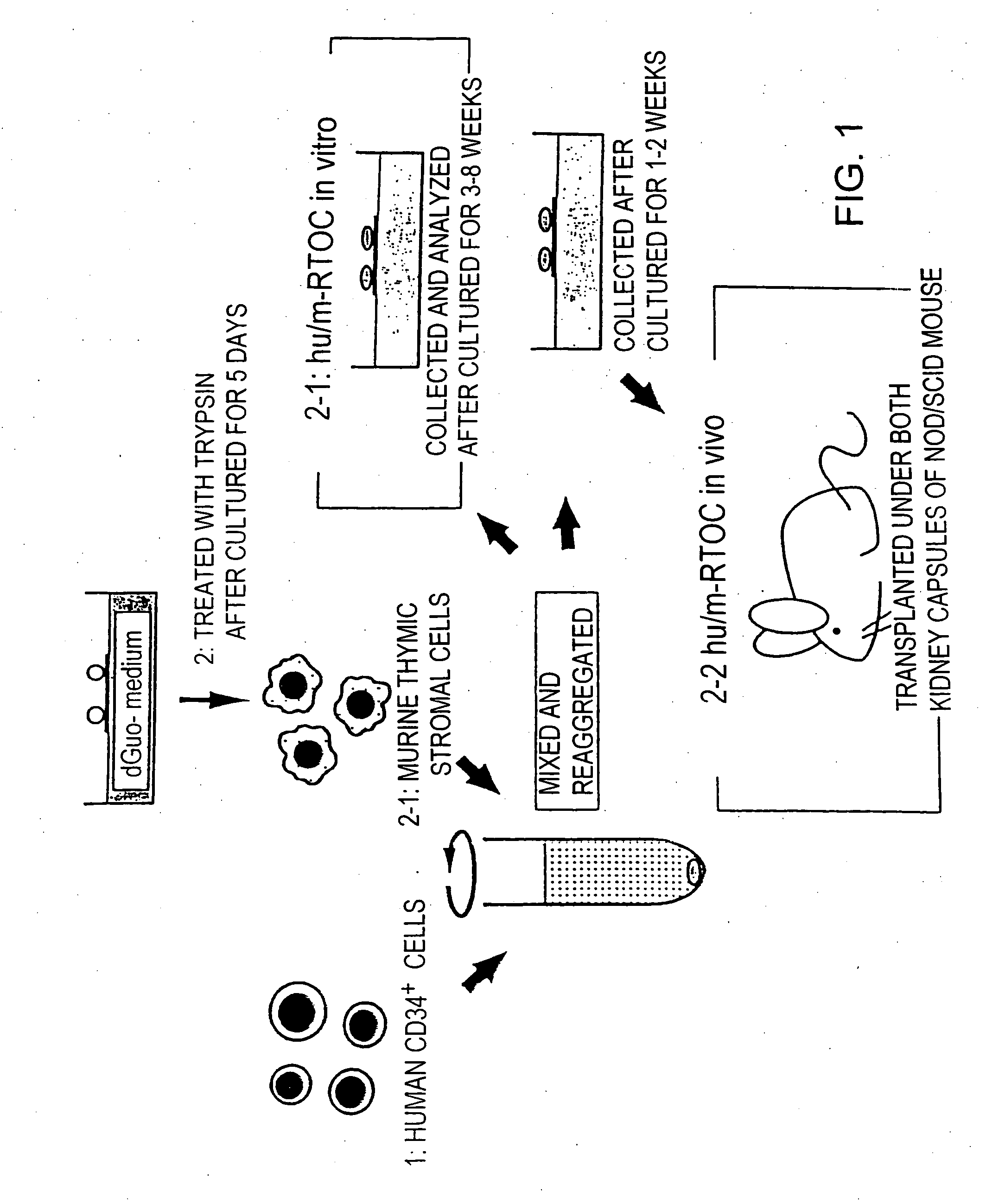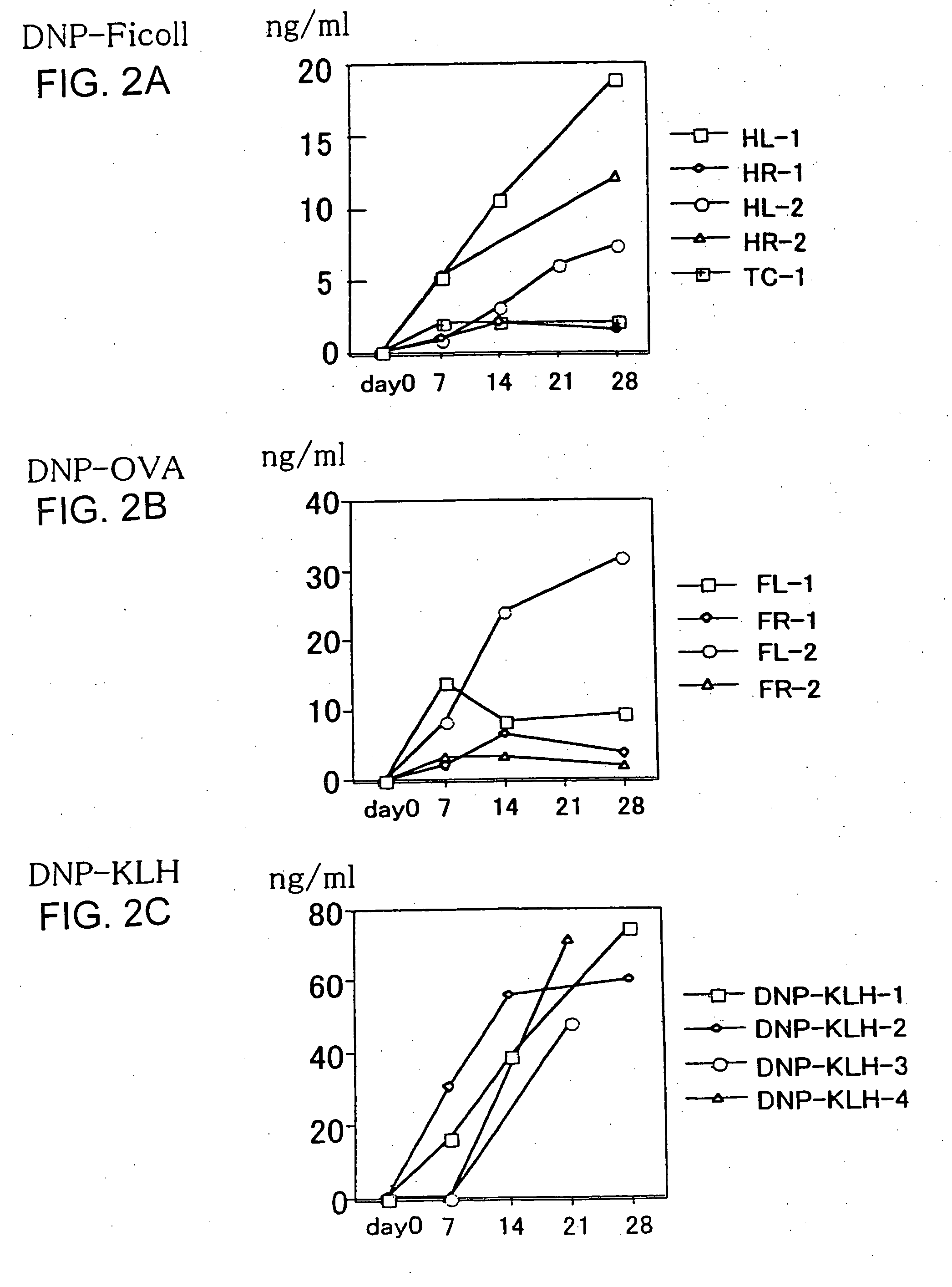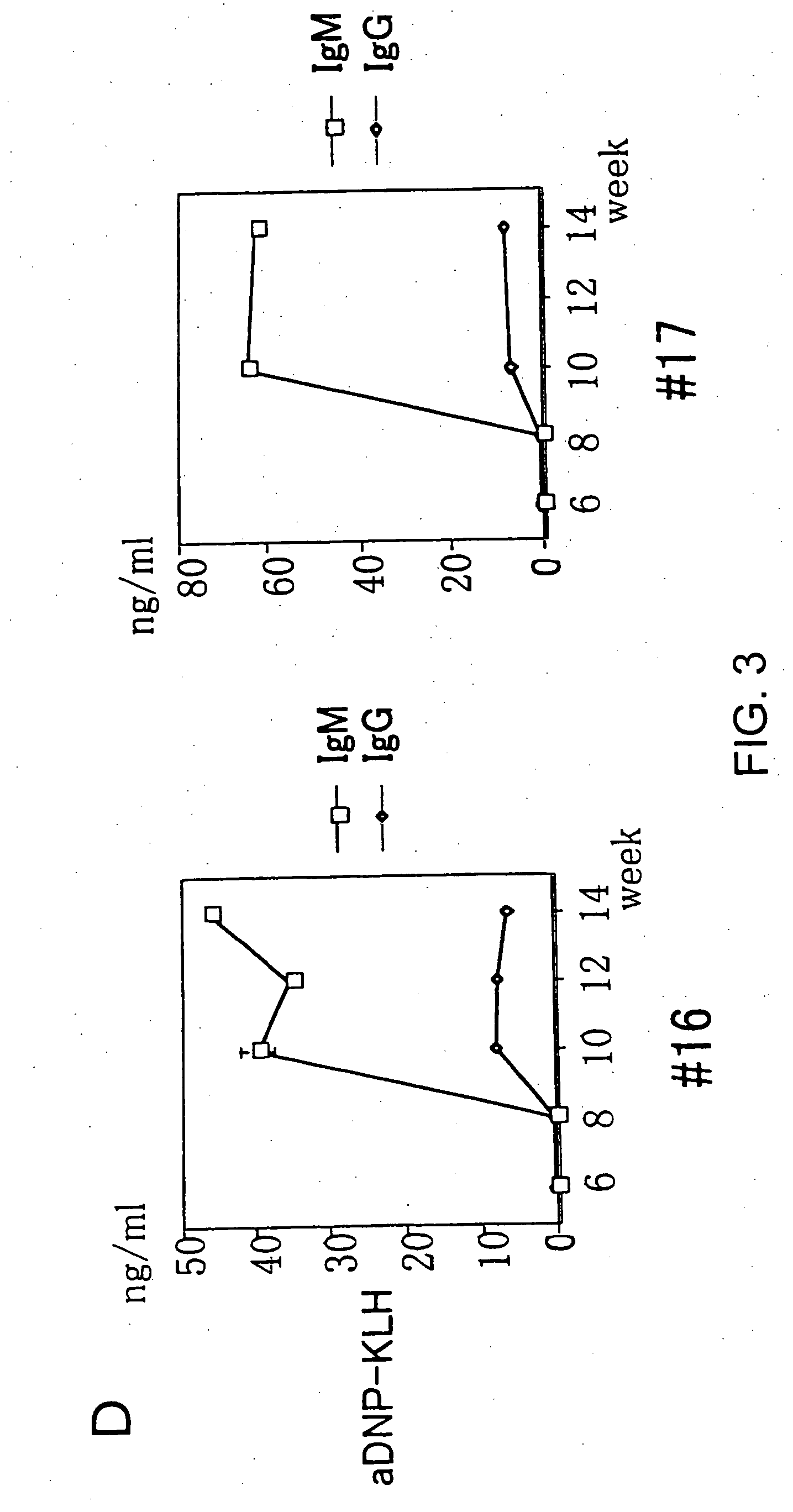Chimeric mouse having an immune system constructed with human CD34+ cells and use thereof
a human antibody and mouse technology, applied in the field of chimeric mice, can solve the problems of difficult arbitrarily obtaining the desired human antibody by the method, limited application of antibodies to therapeutic agents, and low antigenicity of antibodies derived from human antibody producing cells
- Summary
- Abstract
- Description
- Claims
- Application Information
AI Technical Summary
Benefits of technology
Problems solved by technology
Method used
Image
Examples
example 1
Isolation of CD34+ Cells from Human Umbilical Cord Blood
[0041] Human umbilical cord blood was collected, overlaid on top of Ficoll-Hypaque, a hemocyte separating media (d=1.077; Amersham Pharmacia), and centrifuged at 2,000 rpm for 30 min at 20° C. The leukocyte phase, comprising separated lymphocytes at the interface between two separated phases, was collected, and washed three times with PBS containing 1% BSA and 0.02% EDTA (Washing buffer). The resulting cellular fraction of leukocytes was separated using the MACS CD34 immunomagnetic isolation kit (Miltenyi Biotec, Glodbach, Germany), and CD34+ cells were thus obtained. Specifically, the cells were labeled with magnetic beads according to the manufacturer's instruction and washed with the washing buffer. The VS+ column was mounted onto the MACS separator, and CD34+ cells were separated. The collected cells were positively selected on the RS column again. After the number of the separated cells was counted, the solvent was replac...
example 2
Generation of a Mouse into which Human Lymphocytes is Transplanted
[0042] At the age of 8 weeks, NOD / sci-scid (NOD-SCID) mice (J. Immunol. 154: 180 (1995)) were irradiated with X-rays at 3.5 Gy, which is a 50% lethal dose, and the human CD34+ cells prepared according to Example 1 were transplanted via the tail vein into the mice at 500,000 cells / mouse. To improve the engraftment ratio of transplanted cells, human peripheral blood lymphocytes that had been irradiated with X-rays at 15 Gy were transferred into the tail vein as accessory cells, at 500,000 cells / mouse. Furthermore, for the same purpose, 10 ml of anti-asialo GM1 antibody (Wako Jyunyaku) was intraperitoneally injected on the day before transplantation, the day of transplantation, and two days after transplantation, in order to reduce the activity of NK cells derived from the mice. Four weeks later, human SCF (20 μg / kg / day) (Amgen Biologicals) and G-CSF (25 μg / kg / day) (Kirin) were intraperitoneally injected for 4 days.
example 3
Sensitization with an Antigen and Measurement of an Antibody
[0043] Six week after transplantation of human CD34+ cells, a T cell-independent (TI) antigen, Ficoll-DNP (J. Immunol. 114: 704 (1975)) (50 μg / head), or a T cell-dependent (TD) antigen, KLH-DNP or OVA-DNP (Methods Med. Res. 10: 94 (1964)) (25 μg / head), was mixed with an equal volume of the complete Freund's adjuvant (Difco Laboratories), and intraperitoneally injected. Mice were immunized every two weeks in the same way, with the exception that the incomplete Freund's adjuvant (Difco Laboratories) was used as the adjuvant. After immunization was initiated, blood samples were collected every week suborbitally, and the titer of the antibody originating from the transplanted human cells and the frequency of occurrence of human T cells and B cells in the peripheral blood were examined. The titer was examined by ELISA using the serum separated from the collected blood samples and plastic plates coated with KLH-DNP. Specifically...
PUM
| Property | Measurement | Unit |
|---|---|---|
| concentration | aaaaa | aaaaa |
| concentration | aaaaa | aaaaa |
| concentration | aaaaa | aaaaa |
Abstract
Description
Claims
Application Information
 Login to View More
Login to View More - R&D
- Intellectual Property
- Life Sciences
- Materials
- Tech Scout
- Unparalleled Data Quality
- Higher Quality Content
- 60% Fewer Hallucinations
Browse by: Latest US Patents, China's latest patents, Technical Efficacy Thesaurus, Application Domain, Technology Topic, Popular Technical Reports.
© 2025 PatSnap. All rights reserved.Legal|Privacy policy|Modern Slavery Act Transparency Statement|Sitemap|About US| Contact US: help@patsnap.com



